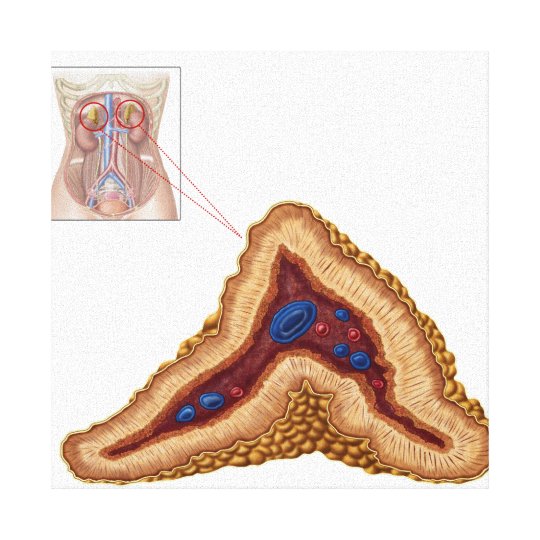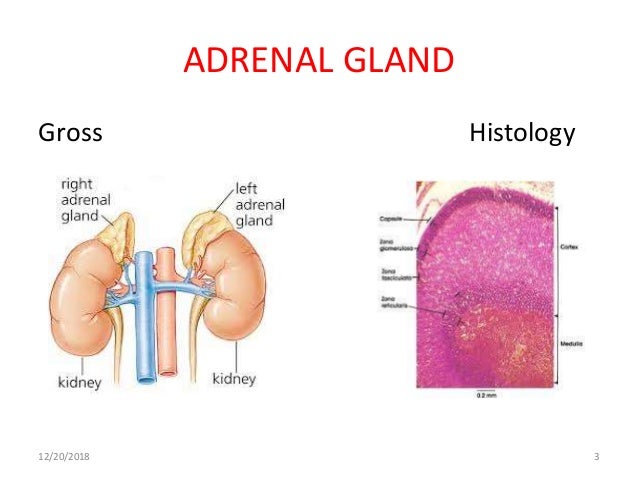
Each region secretes its own set of hormones. The cortex itself is divided into three zones: the zona glomerulosa, the zona fasciculata, and the zona reticularis.

The adrenal gland consists of an outer cortex of glandular tissue and an inner medulla of nervous tissue. (Micrograph provided by the Regents of University of Michigan Medical School © 2012) The cortex can be subdivided into additional zones, all of which produce different types of hormones. Both adrenal glands sit atop the kidneys and are composed of an outer cortex and an inner medulla, all surrounded by a connective tissue capsule. Both norepinephrine and epinephrine are part of the "fight-or-flight" response of the sympathetic nervous system.\): Adrenal Glands. The chromaffin cells of the adrenal medulla also releases norepinephrine, which affects the amygdala, and impacts attention and responses.

Within it are chromaffin cells, which release epinephrine, which takes part in regulating metabolism, heart rate, vasodilation and vasoconstriction.

The adrenal medulla is at the center of the adrenal gland, and is connected to the sympathetic division of the autonomic nervous system. For females, the zona reticularis is the only source of male sex hormones, while males can also produce them in the testicles. The adrenal cortex is also a secondary source of male sex hormones, as the innermost layer, the zona reticularis, produces DHEA and androstenedione, which are sources of conversion to DHA and testosterone. The middle layer, the zona fasciculata, produces and secretes glucocorticoids, including cortisol, which is involved in glucose metabolism and the stress response mechanism.

The outermost layer, the zona glomerulosa, releases aldosterone, which increases water and salt retention in the kidneys. The cortex has three layers, the zona glomerulosa, zona fasciculata, and zona reticularis. The adrenal cortex runs along the outer edge of the adrenal gland and is the primary section involved in stress response. The adrenal glands are endocrine glands that sit on top of the kidneys and take part in the stress response pathway, secondary production of androgens, and blood osmoregulation.


 0 kommentar(er)
0 kommentar(er)
